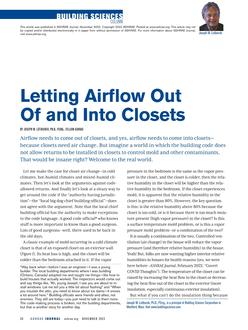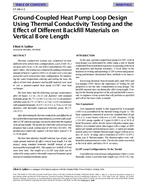Two important design parameters in insulated pitched roofs are (1) vapor-permeable versus vapor-tight underlays and (2) ventilated versus nonventilated roof constructions. In order to study the influence of both parameters on the hygrothermal performance, highly insulated pitched roof systems were constructed at the K.U.Leuven Vliet test building. During two years of testing, their hygrothermal response has been studied in detail. The roof eaves were redesigned between the first and the second year, with the main objective being to increase their wind-tightness.
The temperature and heat flux distributions show the importance of natural and forced air convection. The impact of air transfer shows that traditional thermal performance indicators, such as the conduction-related U-factor, no longer have a clear physical meaning. Measurements of the relative humidity fields, the moisture content in the rafters, and the occurrence of condensation confirmed the importance of air flow, not only for thermal but also for hygric performance. Air leakage measurements reveal the impact of minor perforations, with the leakage linked to the inside-outside temperature difference, wind direction, and wind speed. The air infiltration experiments show a clear relation between wind speed and direction and the magnitude and direction of the air flows in the roof sections.
The performance differences between the ventilated and the nonventilated roofs and between the roofs with a vapor-permeable underlay and those with a vapor-tight underlay are overshadowed by these air and wind flow effects. A comparison with previous test roof results also indicates that the very low density of the mineral wool used increases the importance of wind and air flow in and through the roof sections.
Citation: Thermal Performance of Exterior Envelopes of Whole Buildings IX
Product Details
- Published:
- 2004
- Number of Pages:
- 20
- File Size:
- 1 file , 6.3 MB
- Product Code(s):
- D-BldgsIX31


